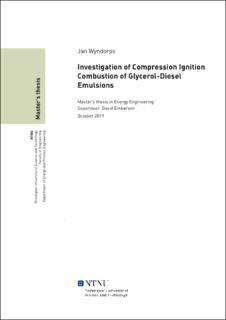Investigation of Compression Ignition Combustion of Glycerol-Diesel Fuel Emulsions
Abstract
With Biodiesel production having established in the past century, there is an ongoing interest to add value to its abundant by-product glycerol. With regard to a shortly closed product cycle, its utilisation in the fuel sector is favourable. Beside the usage as a stand-alone fuel and chemical conversions to tailor-made oxygenated fuel blends, purified glycerol can be added to diesel fuel in form of an emulsion. The increased oxygen content of the fuel is promising to reduce soot formation when used in compression ignition engines. The objective of this work is the profound investigation of the combustion behaviour of glycerol-diesel emulsions when used as a diesel fuel.
To begin with, previous studies on glycerol utilisation in internal combustion engines are summarised. Based on this knowledge the emulsion preparation method is determined and potential issues due to the properties of glycerol are identified. To obtain a broad view, the experimental investigation is conducted on two independent setups. Global parameters like performance and engine-out emissions are assessed with an instrumented six-cylinder engine which is equipped with a particulate matter and an exhaust gas analyser. Additionally, an optical accessible one-cylinder engine is used for profound investigation of flame properties and in-flame soot using OH*-chemiluminescence and light extinction high-speed imaging. The data acquired on both test rigs are analysed in detail to gain a greater understanding of the combustion properties. In the end, the results are discussed with regard to potential benefits and issues when using glycerol-diesel emulsions.
